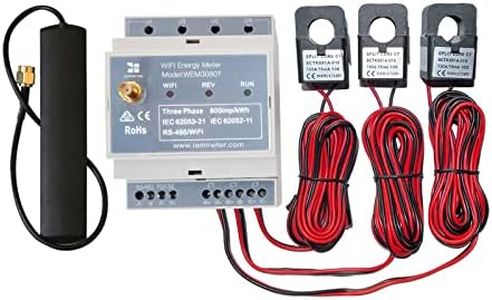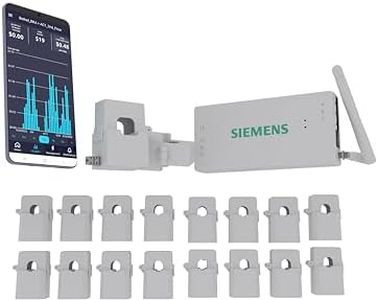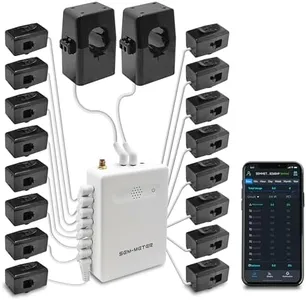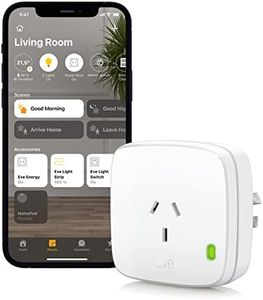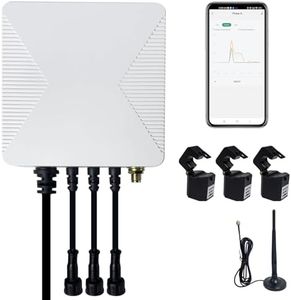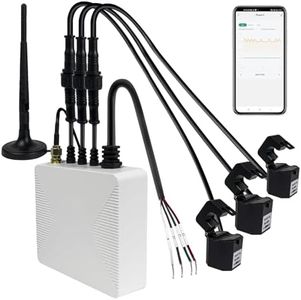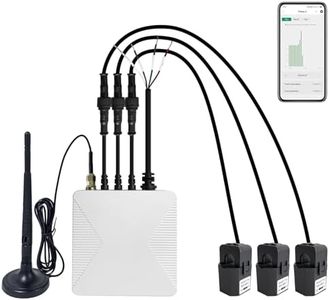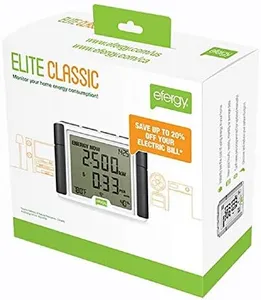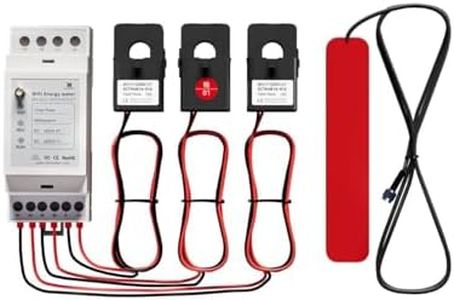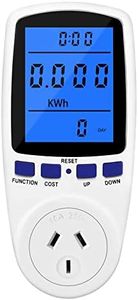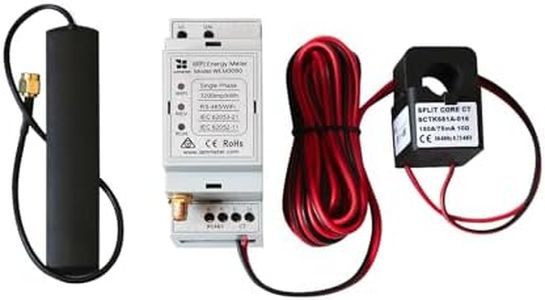We Use CookiesWe use cookies to enhance the security, performance,
functionality and for analytical and promotional activities. By continuing to browse this site you
are agreeing to our privacy policy
10 Best Home Energy Monitor
From leading brands and best sellers available on the web.By clicking on a link to a third party's website, log data is shared with that third party.
Buying Guide for the Best Home Energy Monitor
Choosing a home energy monitor can help you understand how much electricity your household is using, identify where you might be wasting power, and figure out ways to become more energy efficient. When looking at different monitors, it's important to think about how much detail you want about your usage, how hands-on you want the setup to be, and what kind of devices and systems you want the monitor to work with. The best choice is one that fits your home, your habits, and the types of appliances you use most.Type of MonitoringThis refers to how the device tracks your energy consumption. Some monitors track your home's total usage (whole-home monitoring), while others let you see the power used by individual appliances (appliance-level monitoring). Whole-home monitors are simpler and give a big-picture view—good if you just want an overall sense of usage. Appliance-level monitors are more detailed and are best if you want to see which devices use the most power. Consider how detailed you want your data to be and whether you want to focus on specific devices or just the household as a whole.
Installation MethodInstallation can range from plug-and-play devices you put into a wall outlet, to more complex units that need to be installed inside your home's electrical panel. Plug-in models are easiest for renters or beginners, but can only monitor one appliance at a time. Panel-installed monitors can track your whole home's usage and sometimes even particular circuits, but usually need to be installed by an electrician. Choose a method that matches your comfort level with setup and your home's ownership status.
Data Access and ReportingThis spec refers to how the monitor shares information with you. Some devices display basic numbers on a built-in screen, while others connect to apps or web portals and provide detailed graphs, real-time alerts, and usage breakdowns. If you want insights, comparisons, and tips, look for monitors with rich, app-based interfaces. If you just need the basics, a simpler display may be enough. Pick according to how much information you want and how you prefer to view it.
CompatibilityCompatibility is about whether the monitor works with your home's electrical system (such as single-phase or three-phase power), as well as integration with other smart home platforms (like Alexa, Google Home, or Apple HomeKit). Some monitors can connect with other smart devices, making it easier to automate things or get combined data. Consider your home's wiring and whether you already use smart home platforms or plan to in the future.
Accuracy and Update FrequencyThis spec describes how closely the monitor tracks actual electricity use and how quickly it refreshes its data (real-time, every minute, or less often). Higher accuracy and faster updates are ideal for people who want to respond quickly to spikes or troubleshoot energy use, but for general monitoring, slightly slower updates may be fine. Think about whether you need minute-by-minute tracking or just general trends over days or weeks.
Historical Data StorageThis tells you how long the device keeps your energy usage records and how you can access past data. Some devices only show daily or weekly summaries, while others let you look at months or years of usage. If you want to track your progress or compare over time, look for a system with good historical data storage and easy access to it. How much you need this depends on whether you're trying to make long-term changes or just want short-term snapshots.
